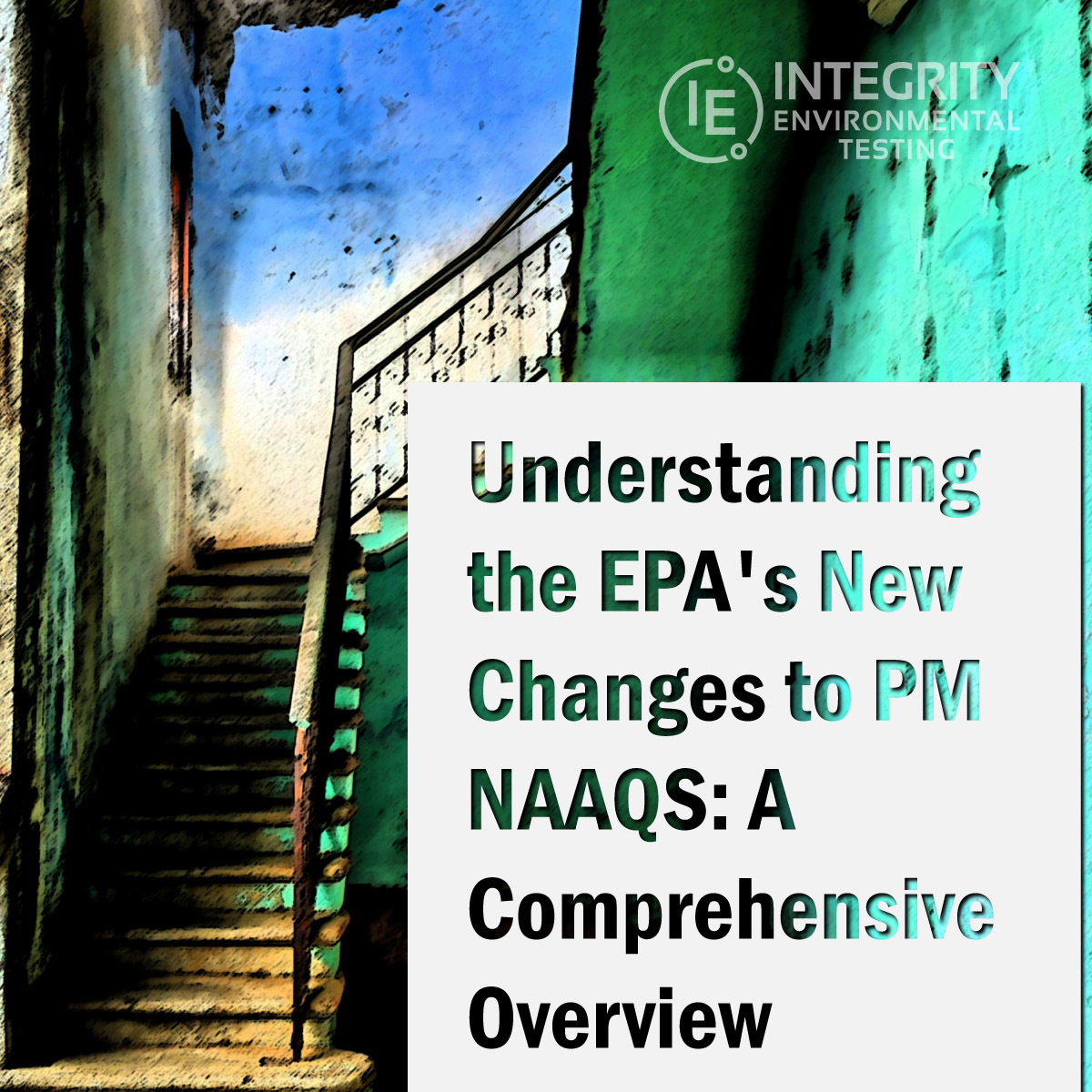The Environmental Protection Agency (EPA) plays a pivotal role in safeguarding the environment and public health across the United States. Recently, the EPA has announced significant changes to the National Ambient Air Quality Standards (NAAQS) for particulate matter (PM). These changes are crucial as they impact various industries, communities, and individuals nationwide. Here we will delve into the EPA’s new updates to the PM NAAQS, gaining some understanding what these changes entail and their implications for different stakeholders.
What are PM NAAQS?
Particulate matter refers to tiny particles or droplets in the air that can be inhaled into the lungs and may cause serious health problems. The EPA establishes NAAQS to set standards for common air pollutants, including for particulate matter (PM), with the aim of protecting public health and the environment. PM is categorized based on its size: PM10 (particles with diameters that are 10 micrometers and smaller) and PM2.5 (particles with diameters that are 2.5 micrometers and smaller).
Overview of the EPA’s New Changes
The EPA’s recent changes to the PM NAAQS focus primarily on PM2.5, recognizing its significant impact on public health.
Here’s a breakdown of the key updates:
Revision of Primary PM2.5 Standard
The EPA has revised the primary NAAQS for PM2.5, lowering the annual standard from its previous level of 12.0 micrograms per cubic meter µg/m³) to 9.0 micrograms per cubic meter ([Y] µg/m³). This adjustment reflects scientific evidence which shows that our current standards do not adequately protect public health, which is regulated by the Clean Air Act.
Retention of Secondary PM2.5 Standard
While the EPA has updated the primary PM2.5 standard, it has retained the existing secondary PM2.5 standard, which focuses on protecting public welfare, including visibility, crops, and ecosystems.
Assessment of PM10 Standard
Additionally, the EPA has conducted a thorough review of the primary and secondary standards for PM10 but has decided to retain the current standards without revision.
Implications of the Changes
The EPA’s revised PM2.5 standards have far-reaching implications for various stakeholders:
- Public Health: Lowering the annual standard for PM2.5 underscores the EPA’s commitment to safeguarding public health. By reducing exposure to fine particulate matter, the agency aims to mitigate adverse health effects such as respiratory and cardiovascular diseases, particularly in vulnerable populations such as children, the elderly, and individuals with pre-existing health conditions.
- Industry and Business: The updated PM2.5 standards may necessitate changes in emission controls and pollution mitigation measures for industries and businesses, particularly those operating in sectors that contribute to PM2.5 emissions. Compliance with the new standards may require investments in cleaner technologies and operational adjustments to meet regulatory requirements.
- Environmental Protection: Strengthening the standards for PM2.5 aligns with the EPA’s mission to protect the environment and natural resources. By reducing PM2.5 emissions, the agency aims to improve air quality, mitigate environmental degradation, and preserve ecosystems’ integrity, thereby promoting sustainable development and biodiversity conservation.
- Regulatory Compliance: State and local regulatory agencies will play a critical role in implementing and enforcing the revised PM2.5 standards. They will need to develop and enforce regulatory frameworks, monitor air quality, and collaborate with stakeholders to ensure compliance with the updated standards while balancing economic and social considerations.
Read the EPAs Final Rule to Strengthen the National Air Quality Health Standard for Particulate Matter Fact Sheet.
Next Steps and Considerations
As the EPA’s new PM2.5 standards take effect, stakeholders should consider several key factors:
- Compliance Deadlines: Stay informed about the timelines and deadlines for complying with the revised PM2.5 standards to avoid potential penalties or regulatory issues. See Timeline on EPA’s website.
- Technology and Innovation: Explore innovative solutions and technologies to reduce PM2.5 emissions and improve air quality while maintaining operational efficiency and competitiveness.
- Community Engagement: Engage with local communities, environmental organizations, and public health agencies to raise awareness about the importance of air quality protection and foster collaboration in addressing PM2.5 pollution.
- Monitoring and Reporting: Implement robust monitoring and reporting mechanisms to track progress towards meeting the new PM2.5 standards and identify areas for improvement or intervention.
In conclusion, the EPA’s updated PM NAAQS, particularly the revised standards for PM2.5, mark a significant milestone in efforts to protect public health and the environment from the adverse effects of air pollution. By strengthening regulatory standards, fostering innovation, and promoting collaboration, stakeholders can work together to achieve cleaner air and healthier communities for present and future generations.
Here is the EPA’s updated website with further resources and information.
[Note: The information provided in this blog post is based on the EPA’s official document titled “Overview of the EPA’s New Changes to PM NAAQS,” dated Feb. 7, available here. Readers are encouraged to refer to the original document and consult relevant authorities for specific guidance and compliance requirements.]
#RegulatoryCompliance #EPARegulations #AirQualityStandards #EnvironmentalTesting #CleanAir

